Before I jump into gamification for education, I know gamification can be a daunting task, and I want to make it easier for you! Grab these notes about what you can do to gamify your classroom here!
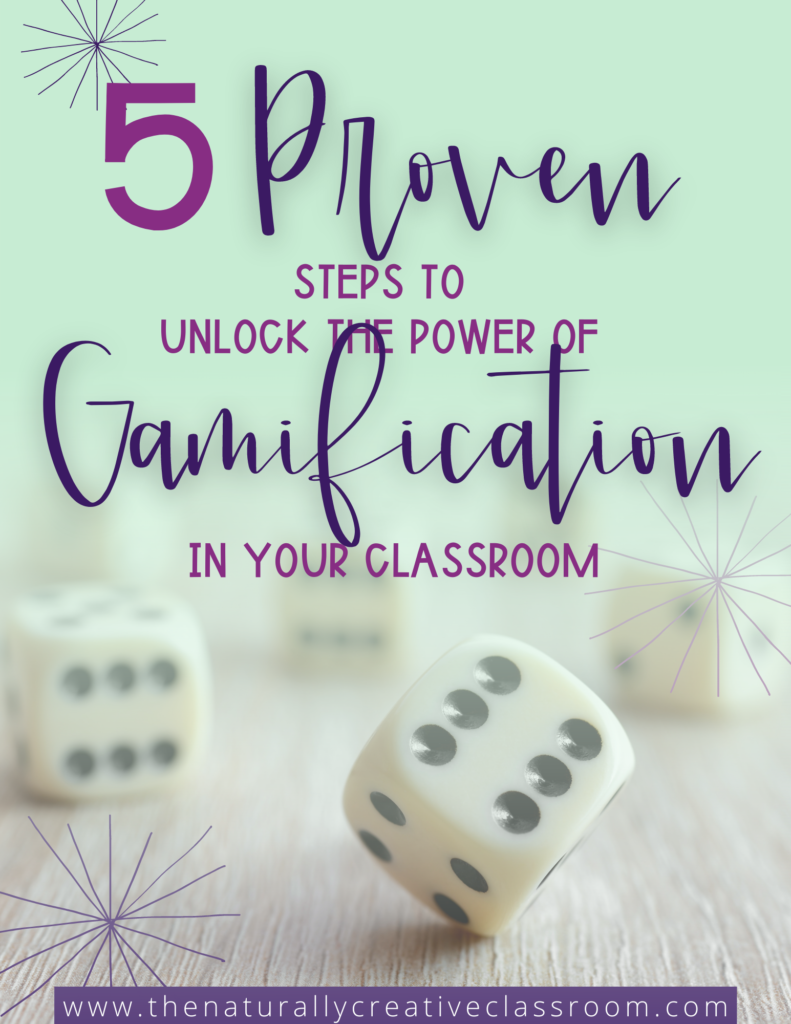
My Journey to Gamification Learning
After four years teaching first grade, I was finally getting the opportunity to move back up to third grade, my desired grade level. I was excited because I would have the opportunity to work with students that I had had in first grade.
In the few weeks before school started, the school was buzzing with beginning of the year excitement. I was so excited to really dig into the 3rd grade curriculum. Out of the corner of my eye I could see the principal making her way down the hallway handing out class lists.
She slowly handed me my list with an “understanding smile” and walked to the next classroom. My eyes widened as I scanned down….and down…and down the list..33 third graders. We had heard that there might be bigger classes, but, seriously?! For sure they would make a new section, right?
They did not.
Gamification for Differentiation
That number grew to 35 by the time the year started a few weeks later. 35- and no teacher’s aid. The last time I taught third grade, I had 18 kids, almost half. I knew immediately that my teaching HAD to change to be able to reach all of those children in the best way that I could. No way did I want to try to keep everyone’s attention at one time doing some sort of math acrobatics.
The previous year, my teaching bestie and I had started to learn all about the Daily 5 for reading. I absolutely loved it and had gotten good results. Why couldn’t math be taught in a similar fashion? Why was it always taught whole group?
I dug into my math curriculum and started to play around with what types of groups I could have. This particular curriculum had included tons of games aligned to the lessons. I landed on a “small” learning group, a games group, and an independent work group which were all based upon their scores on a pretest.
That year was a blast. My kids LOVED math and blew the standardized test out of the water. After that taste of gamification for education, I haven’t looked back.
Why Games?
Have you ever noticed how much students are engaged when learning is in the form of a game? Turn a deck of word problem task cards into a scavenger hunt or a game of scoot, and suddenly you have kids clutching clipboards and moving around the classroom, looking for hidden problems or expectantly waiting to see if they got each problem correct. Put your spelling words into a word search, and now kids are thinking them over in their heads as they search the puzzle.
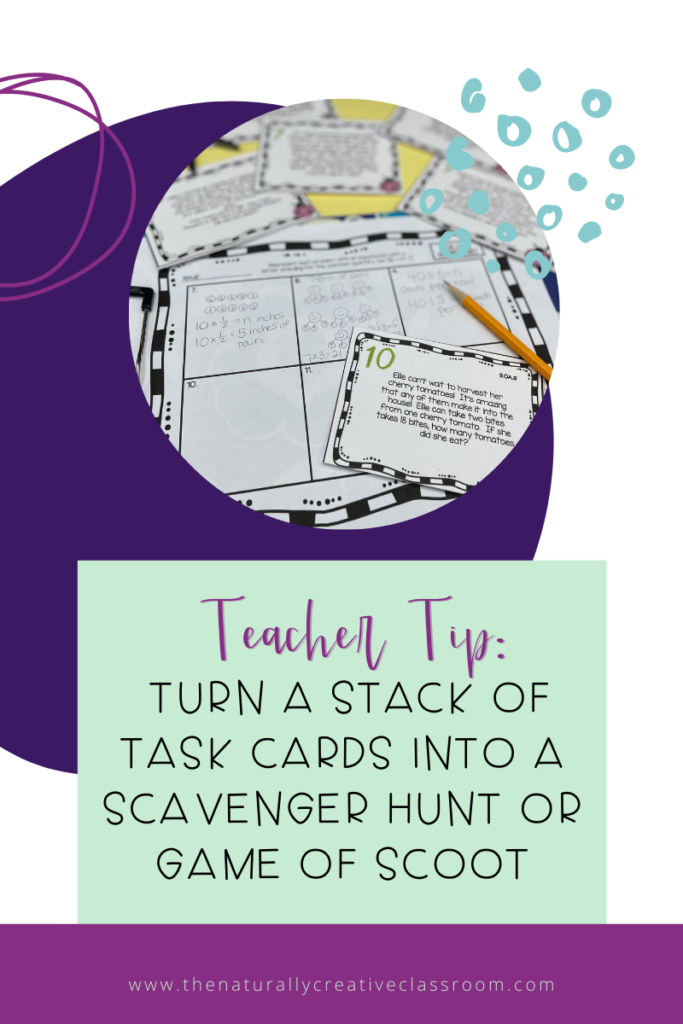
The books Ready Player One and Ready Player Two by Earnest Cline also have inspired me. Generally, I don’t lean towards science fiction, but I have been recommending these books to everyone! I had no idea what Ready Player One was about when I started, but it was so creatively written and entertaining to read that it drew me right in. While not an instruction book, it gave me some incredible ideas and motivation to truly gamify my work.
Read This if You are Asking, “Why is Gamification in Education Beneficial?”
While gamification is a relatively new concept in education, multiple studies have shown it to be very beneficial, especially in math. Gamification can significantly increase focus and engagement (especially for students with shorter attention spans) and reduce math anxiety. Other positive benefits of gamification include:
- Increased motivation
- Creating a positive math attitude
- Increased resilience, less tendency to easily give up
- Persistence in solving problems
- An easier way to track student progress
- Encourages teamwork
- Fosters creativity
- Increased novelty, curiosity, and challenge
Does this sound like something you would like to try in your classroom?! If yes, read on!
I Don’t Know What Gamification Is. What is a Good Gamification Definition?
First of all, I wanted to clarify gaming vs. gamification. Gaming is simply playing a game for fun, from the simple yo-yo to electronic gaming. When you have a family game night, you are gaming. Gamification is when a teacher or instructor adds gaming elements to a task or assignment that isn’t usually a game. For example, when students earn badges instead of grades or their progress is reported in a timeline of reaching milestones.
Gamification Examples You Might Know
One of the most prominent examples in my class and my home has been Prodigy. Prodigy is a free game that has put math practice into a pure gaming framework. Students create an avatar, move through worlds, and engage in math-based battles. The level of problems increases as students demonstrate competency. Students LOVE Prodigy and often beg to play it. I MAY have spent the money for the premium membership, which includes gifts and special powers. While it has its pros and cons, It’s a great way to get them to keep practicing, especially over the summer.
Another example of gamification is Happy Numbers. This program is not as gamified as Prodigy but has many gaming features. Students complete more traditional math practice, but their progress is tracked through a “fruit bar” at the top and by a growing dinosaur. They also move through planets and worlds.
5 Simple Ways to Start Gamification of Education into Your Classroom
Adding gaming mechanics to your classroom doesn’t have to be complicated! Starting with just one subject or time of day, like math or morning work, can make it seem more doable. Let me show you some effortless ways that you can start to incorporate gamification into your classroom.
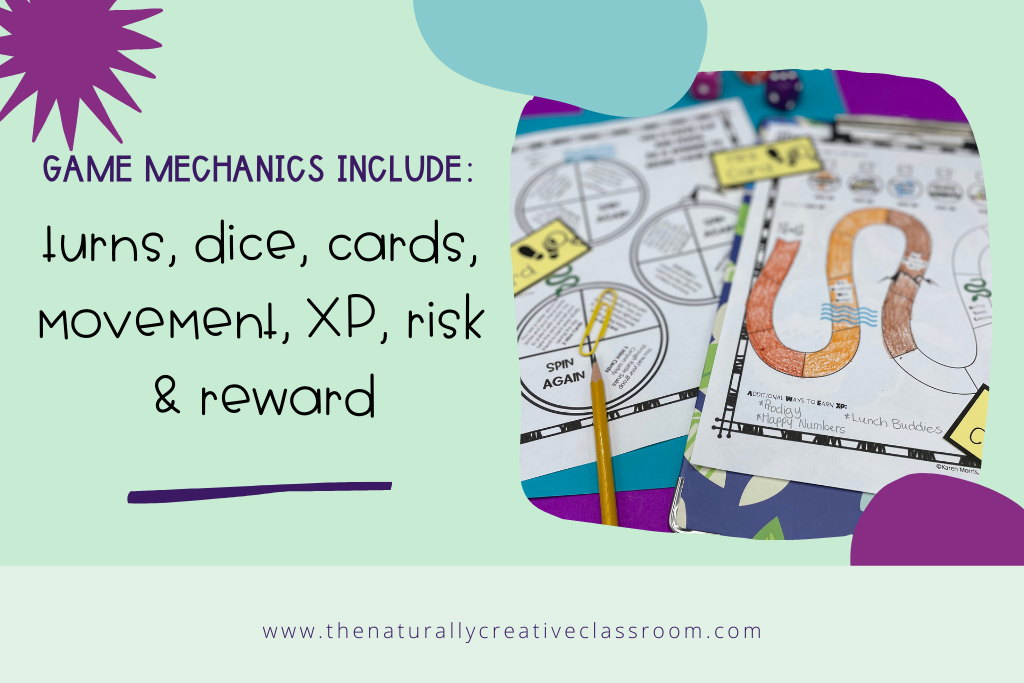
Use XP to Introduce Gamification for learning
One easy way to start to introduce gamification is to change your grading system into Experience Points, or as it’s known in gaming, XP. The benefit of XP is that it flips the grading system on its head. Instead of starting with a possible 100% and going down with each problem you get wrong, you start at zero and earn XP as you go to try to reach that goal.
For example, let’s say the goal for the quarter is to earn 20,000 XP. When a student obtains an 85% on a quiz, they earn 8,500 XP. You can offer extra XP through “sidequests” such as additional practice assignments, coming to you for extra help, or by re-doing the quiz.
Use gamification terms
Another way to add gamification for education is simply to use gamification terms for what you are teaching. Just as in the example above, earned points can become “XP”. Here are a few more examples:
- Test = quest
- Homework = task
- Quiz = mini-quest
- Math topics = stages
- Extra Practice = sidequests
- Notes or Anchor Charts = clues or maps that can help you on your quest (anyone else seeing Toad from Mario here?)
- Learning Groups = appropriate to the theme, e.g., crew or squad.
Offer rewards
There are two types of awards that you can offer, either in class or in-game. In-game rewards are more motivating for students in a gamified classroom (and they are always free!). A reward can be as simple as earning a badge, a hint card, a homework pass, or inviting a friend from another class to sit by you at lunch. Chances are, you already have some form of awards in your classroom.
Create collaborative learning teams
Learning teams go hand in hand with gamification. Most classrooms have students in groups for various reasons. It is a simple tweak to turn this group into a learning team working towards collaborative progress. Adding a learning team can help ease or eliminate some of the “pain points” that can often arise in a group. You can then adjust group names based on your chosen theme.
Use friendly competition
According to the studies, one of the most motivating parts of gaming is the leaderboard. Ideally, the leaderboard would be displayed in your classroom and updated regularly so that all students can see where everyone else is in their journey. Competition is one of the aspects that has the most controversy, especially in the United States. Displaying scores is just a normal part of education in many countries, but I know that teachers in America do not typically do it.
I can see competition being successful in two different ways. First, chose a lower-stakes entrance into gamification, such as gamifying your morning work or other smaller portion of your day. Secondly, it would be essential to ensure multiple opportunities to earn XP through bonus assignments, opportunities for extra help, or making progress on a platform such as Happy Numbers or Khan Academy. Remember, one key difference is that kids earn points towards a goal starting at zero, not starting at 100%, and going down from there.
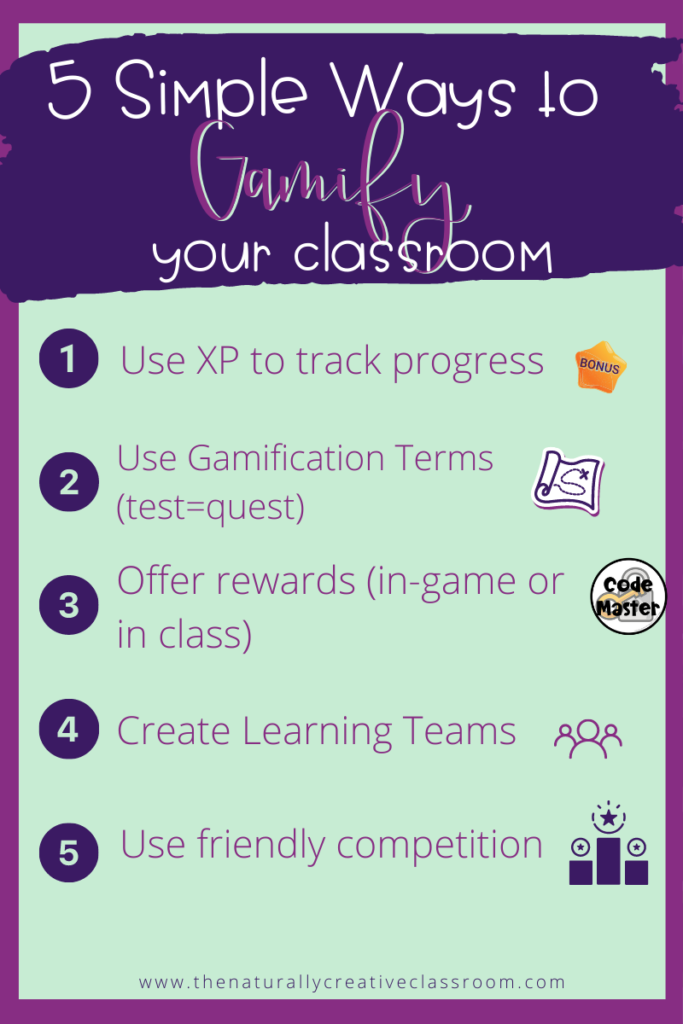
More Ideas for Adding Gamification into your Classroom
For more on how to implement gamification for education, check out the following resources:
5 ways to Gamify Your Classroom
Video Game Mechanics (Core, Primary, Secondary): Everything You Need to Know
Watch: How Games Make Kids Smarter
Boom Cards – This website has all types of gamified content. If you are new to Boom Cards, you can set up an account and try out my multi-step word problem Boom Cards, all for free!
Rekenrek Games for Subitizing
Thinking about changing the way you do, well, everything- can seem like a big task! To make getting off the ground a little easier, check out my free multi-step word problem Boom Cards!
<iframe src=”https://www.facebook.com/plugins/video.php?height=314&href=https%3A%2F%2Fwww.facebook.com%2Fthenaturallycreativeclassroom%2Fvideos%2F1161716134340631%2F&show_text=false&width=560&t=0″ width=”560″ height=”314″ style=”border:none;overflow:hidden” scrolling=”no” frameborder=”0″ allowfullscreen=”true” allow=”autoplay; clipboard-write; encrypted-media; picture-in-picture; web-share” allowFullScreen=”true”></iframe>
Did you like this blog? To learn how to Blog Like a Boss, check out:
7 Helpful Tips on How to Blog Like a Boss
Learn 9 AMAZING ways to teach math vocabulary!
Discover more ways to make teaching math memorable in this post 🙂
Wondering what PEMDAS stands for? Discover this and more games in this post!

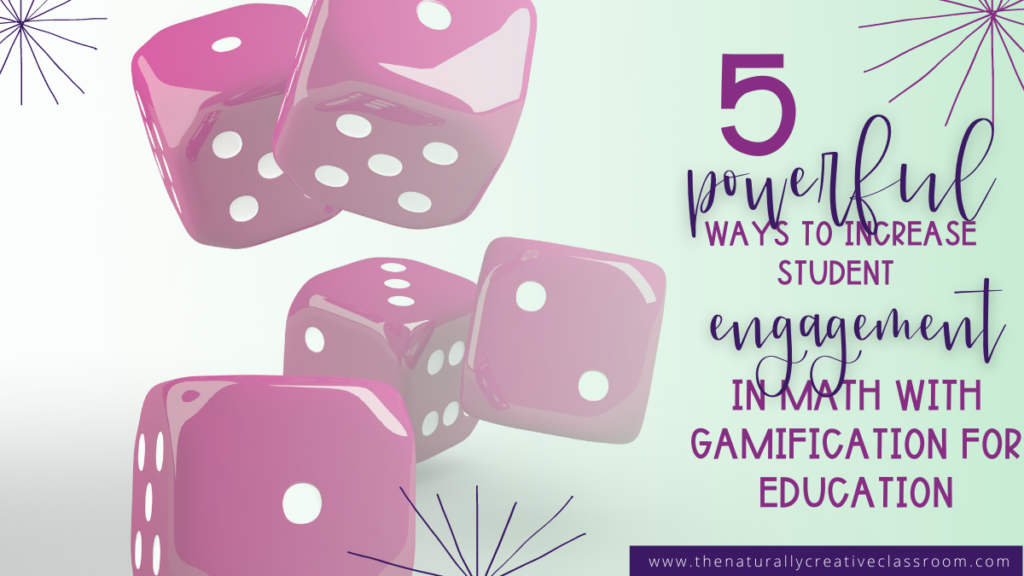
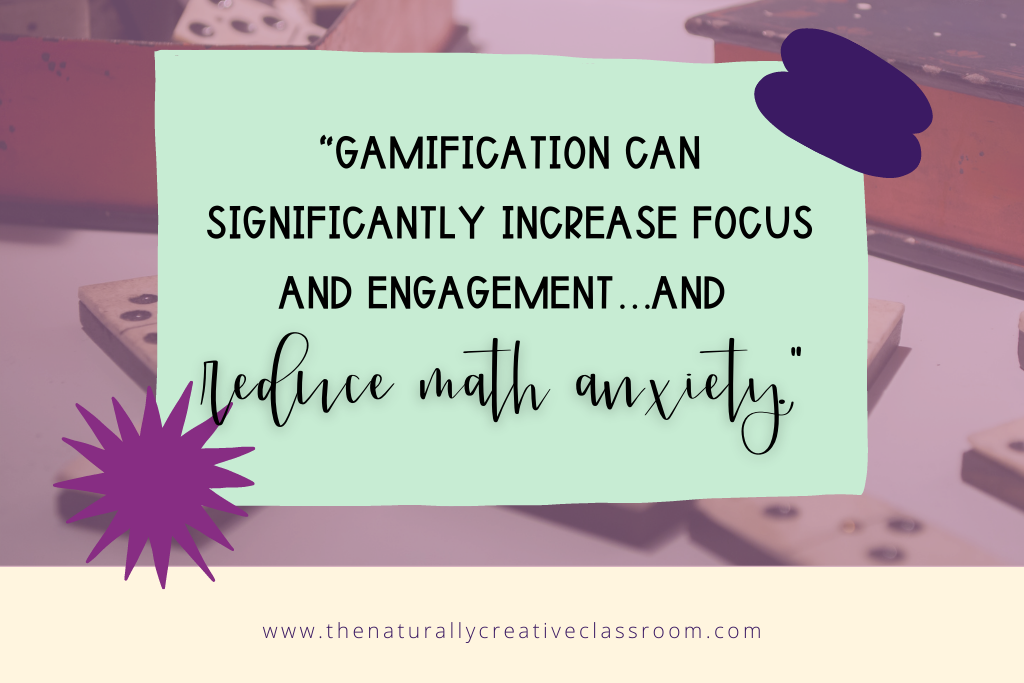
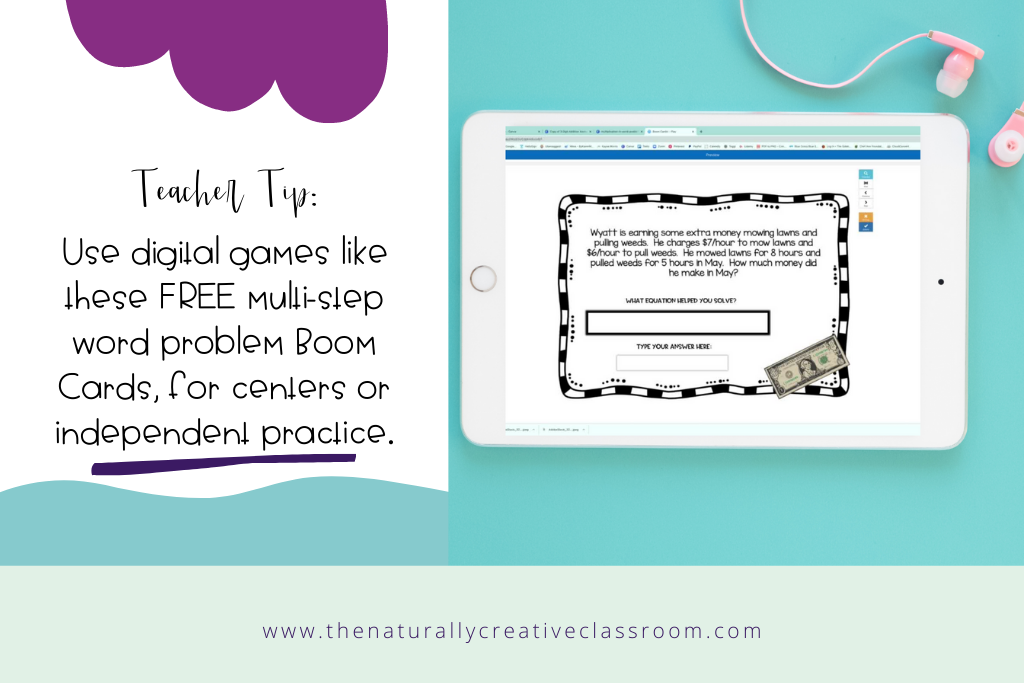

5 Responses